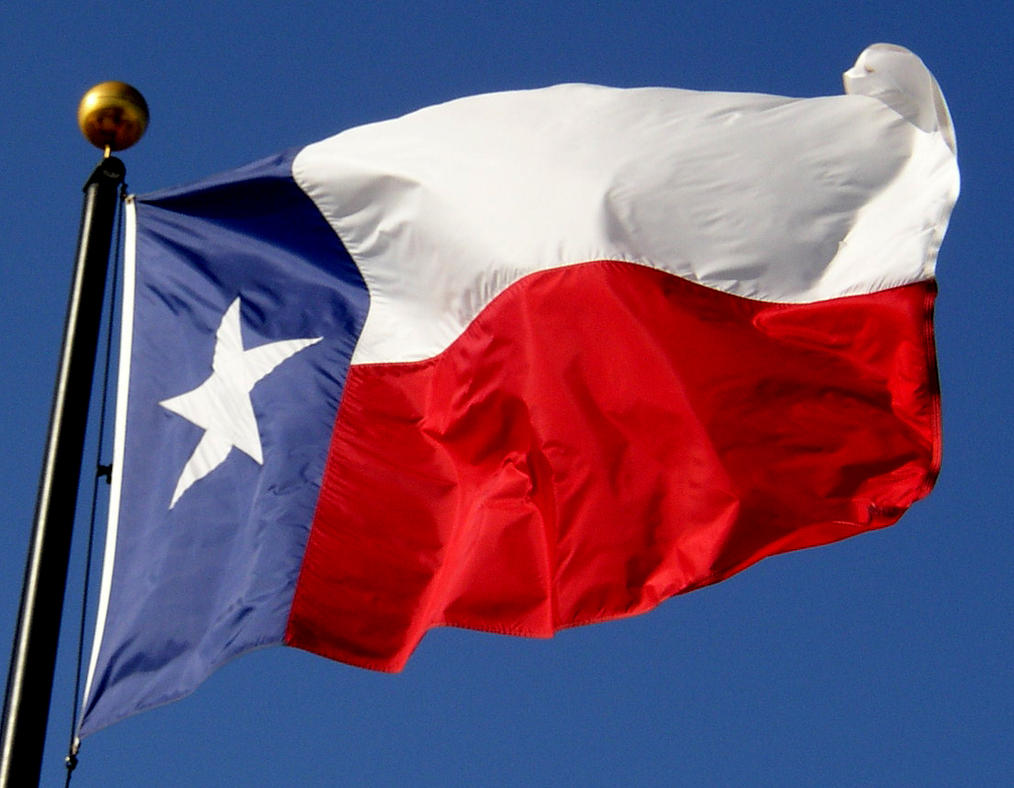 |
| Texas state flag. |
Tonight we are in Fort Worth, visiting friends on an intermediate stop that's famous for two things that stand out in my mind.
First are the stockyards. Between Bozeman and Fort Worth we have seen literally tens of thousands head of cattle. These days cattle are raised primarily on private land and auctioned off on web sites and on cable TV, or purchased by roving brokers and transported on trains and trucks. But it wasn't always so.
For the drovers heading the cattle up the Chisholm trail to the railheads, Fort Worth was the last major stop for rest and supplies. Beyond Fort Worth they would have to deal with crossing the Red River into Indian Territory. Between 1866 and 1890 more than four million head of cattle were trailed through Fort Worth, which was soon known as “Cowtown.” Cowtown soon had its own disreputable entertainment district several blocks south of the Courthouse area known all over the West as “Hell’s Half Acre”.
When the railroad finally arrived in 1876, Fort Worth became a major shipping point for livestock. This prompted plans in 1887 for the construction of the Union Stockyards about two and one half miles north of the Tarrant County Courthouse. It went into full operation about 1889.
With the buying and the selling, and the cattle driving, its wasn't long before the slaughtering and the meat packing concentrated in Fort Worth as well.
It soon became apparent that instead of shipping to other markets to process the cattle, it would be much more desirable to keep more of the business in Fort Worth by having local packing plants. A search began to lure major packers to the City. By about 1900, after much work by local businessmen, both Armour & Co. and Swift & Co. were persuaded to build plants adjacent to the Stockyards.
Construction began in 1902, but not until after the exact site of each plant was decided by a flip of the coin. Armour won the toss and selected the northern site and Swift began to build on the southern tract, which was the site of the original Livestock Exchange and Hotel. Swift & Co. received an unexpected financial bonus when a large gravel pit was found on the southern site that was ultimately used in the construction of both plants.
The new Livestock Exchange Building in its present location, as well as the pens and the barns, were also started in 1902. The new building was designed to house the many livestock commission companies, telegraph offices, railroad offices and other support businesses.
While construction was underway, the Fort Worth Stock Yards Company, which now included the two meat packers, incorporated much of the area north of the river adjacent to the Stockyards as North Fort Worth. In 1909 the City of Fort Worth annexed the new city with the exception
 |
| Fort Worth Stock Yards at night. |
Today, the stockyards are a historical district, with dining, drinking, rodeos, a museum and cowboy hall of fame among the principal attractions.
Fort Worth likes to say it is where the west begins. I guess that kinda depends on your perspective. We started from Montana, so if we took the slogan to heart, we would actually say the West ends here. But we are not quite prepared to give up our cowboy hats and boots as we move further east, so I guess we will just take that slogan as an expression of local civic pride instead of a geographic verity. The second cousin of Dallas is actually the United States 18th largest city, or as our youngest said as we were driving across downtown this afternoon, a place that is starting to look like New York.
The second thing that Fort Worth is famous for, in my mind at least. is it is the city where President John F. Kennedy spent his last night alive.
The morning of November 22, 1963, President Kennnedy spoke to a breakfast function assembled by the Fort Worth Chamber of Commerce in the ballroom of the Hotel Texas, accompanied by Mrs. Kennedy and escorted by Texas native, Vice President Lyndon Baines Johnson.
 |
| LBJ, Jackie Kennedy Onassis and JFK at the Hotel Texas, November 22, 1963. |
A bit later Mr. Kennedy stepped out of the hotel to say a few words to his fans gathered around, and promote Fort Worth's motto in the background, in the company of Texas Governor John Connally as well. Mrs. Kennedy stayed inside as she did not want to expose her hair to the drizzle.
 |
| JFK, John Connally and LBJ, November 22, 1963. |
Air Force One made its last flight with John F. Kennedy as commander in chief aboard, later that morning, a hop and a skip from Fort Worth to Dallas's Love Field. And the rest, as they say, is history.
No comments:
Post a Comment